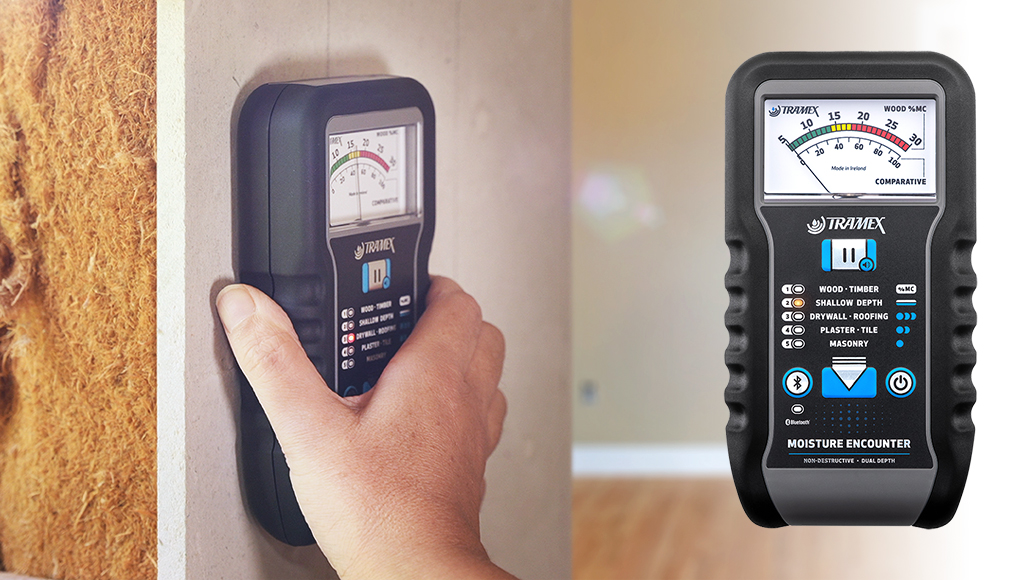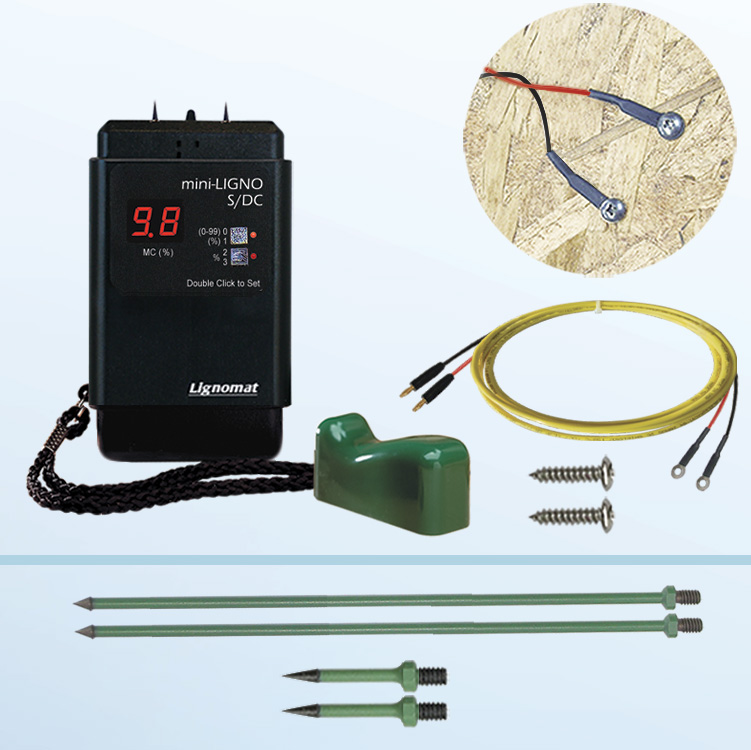How to Utilize a Moisture Meter to Discover Concealed Water Damages in Your Building
How to Utilize a Moisture Meter to Discover Concealed Water Damages in Your Building
Blog Article
Look Into the World of Moisture Meters: Everything You Need to Know
In the world of dampness meters exists a globe of precision and practicality that frequently goes unnoticed. These gadgets, while seemingly straightforward, hold a wealth of details that can dramatically influence different markets and applications. Understanding how moisture meters operate, the various kinds offered, and their diverse usages can drop light on their significance in making sure quality and performance. By discovering the intricacies of dampness meters, one can reveal an important tool that goes beyond simple measurement, supplying insights that can make a significant difference in numerous areas.
How Dampness Meters Work
Dampness meters operate by determining the electric conductivity or capacitance of materials to identify the wetness material existing - Moisture Meter. These meters are invaluable devices throughout numerous sectors, including agriculture, woodworking, and building and construction. By using various techniques such as pinless or pin-type technology, wetness meters give accurate readings that aid professionals make notified decisions
Pin-type wetness meters function by inserting the sharp pins into the product being examined. The electrical conductivity between the pins is then determined, with greater dampness degrees leading to enhanced conductivity. On the various other hand, pinless dampness meters make use of electro-magnetic signals to scan a larger area without triggering any kind of damages to the product's surface area. These meters are perfect for rapidly examining dampness degrees in large areas or completed products.
Despite the approach used, dampness meters play a critical function in avoiding problems such as mold and mildew growth, structural damage, or item flaws caused by excess dampness. Understanding just how these meters job is vital for ensuring the high quality and stability of products in different applications.
Sorts Of Dampness Meters
Given the essential role wetness meters play in different sectors, it is necessary to recognize the different kinds available to specialists for accurately assessing wetness degrees. There are mainly two primary types of dampness meters: pin-type and pinless moisture meters.
Pin-type moisture meters use 2 pins that are put into the material being examined to determine the electric resistance between them. This technique is generally utilized for wood, drywall, and other structure materials. Pin-type meters offer precise readings at specific depths, making them ideal for recognizing dampness slopes.
On the various other hand, pinless dampness meters use electro-magnetic sensing unit plates to check a bigger location of the material without causing any type of damages. This kind appropriates for rapidly scanning large areas and is generally made use of for floor covering, walls, and ceilings. Pinless meters are convenient for taking analyses on finished surface areas without leaving any kind of noticeable marks.
Both sorts of wetness meters have their advantages and are chosen based upon the certain demands of the job handy. Understanding the distinctions in between these kinds is crucial for experts to make precise wetness analyses.
Applications Across Industries
Building professionals depend on moisture meters to analyze the wetness degrees in structure materials like wood, concrete, and drywall, which is vital for maintaining architectural stability and stopping concerns like rot or mold. The floor covering market uses moisture meters to gauge the wetness web content in subfloors prior to setting up numerous floor coverings, stopping expensive problems due to excess wetness. In the food market, dampness meters are used to keep an eye on and regulate moisture levels in items such as grains, nuts, and dried out fruits to maintain freshness and high quality.
Tips for Making Use Of Dampness Meters
Use the dampness meter's calibration setups to ensure exact analyses when gauging the dampness web content in numerous materials. In addition, make sure the meter is established to the proper wetness variety for the material you are measuring to get the most specific outcomes.

When using a pin-type dampness meter, place the pins to the suitable deepness suggested for the material being tested. This guarantees that the moisture readings are drawn from the correct deepness within the product, supplying a more precise depiction of its moisture content. For pinless wetness meters, keep in mind to keep appropriate call with the material's surface area to obtain trustworthy readings.

Frequently examine and replace the batteries in your moisture meter to stop unreliable readings because of Extra resources reduced power. When not in usage to lengthen its life-span and keep its accuracy, Shop the meter in a secure and dry area. By adhering to these tips, you can maximize the performance of your moisture meter and get specific moisture web content dimensions across different materials.

Maintenance and Calibration
To make sure the precision of moisture material measurements, routine upkeep and calibration of the wetness meter are essential action in its appropriate functioning. Upkeep includes maintaining the dampness meter tidy and totally free from particles that could influence its analyses. It is essential to follow the manufacturer's standards for cleaning up to avoid damage to the tool. In addition, routine calibration is essential to confirm the accuracy of the readings. Calibration readjusts the wetness meter to make sure that it offers consistent and trustworthy results.
Calibration needs to be performed regularly, particularly if the wetness meter is utilized often or in essential applications where specific dimensions are called for. Many dampness meters feature calibration devices or can be adjusted by specialist solutions - Moisture Meter. It is advised to maintain a log of calibration days and results to track the efficiency of the wetness meter in time. By site link calibrating the dampness and maintaining meter frequently, individuals can trust the accuracy of the dampness web content dimensions gotten.
Final Thought
To conclude, wetness meters play a critical function in different industries by properly determining the moisture web content of materials. Comprehending how these tools function, the article source various types available, and proper upkeep and calibration are crucial for getting trusted results. Whether in agriculture, manufacturing, or construction, using dampness meters assists ensure top quality control and efficiency in procedures.
Building experts count on wetness meters to assess the wetness degrees in building products like drywall, wood, and concrete, which is crucial for preserving architectural stability and protecting against issues like rot or mold and mildew. The flooring sector utilizes wetness meters to gauge the moisture web content in subfloors before setting up numerous floor coverings, protecting against expensive problems due to excess dampness.Utilize the wetness meter's calibration setups to guarantee precise readings when measuring the dampness material in different materials. By complying with these pointers, you can make the most of the efficiency of your moisture meter and obtain accurate dampness material dimensions throughout different materials.
In conclusion, wetness meters play a critical duty in numerous sectors by properly gauging the dampness web content of products.
Report this page